SUMMARY
This is AI generated summarization, which may have errors. For context, always refer to the full article.
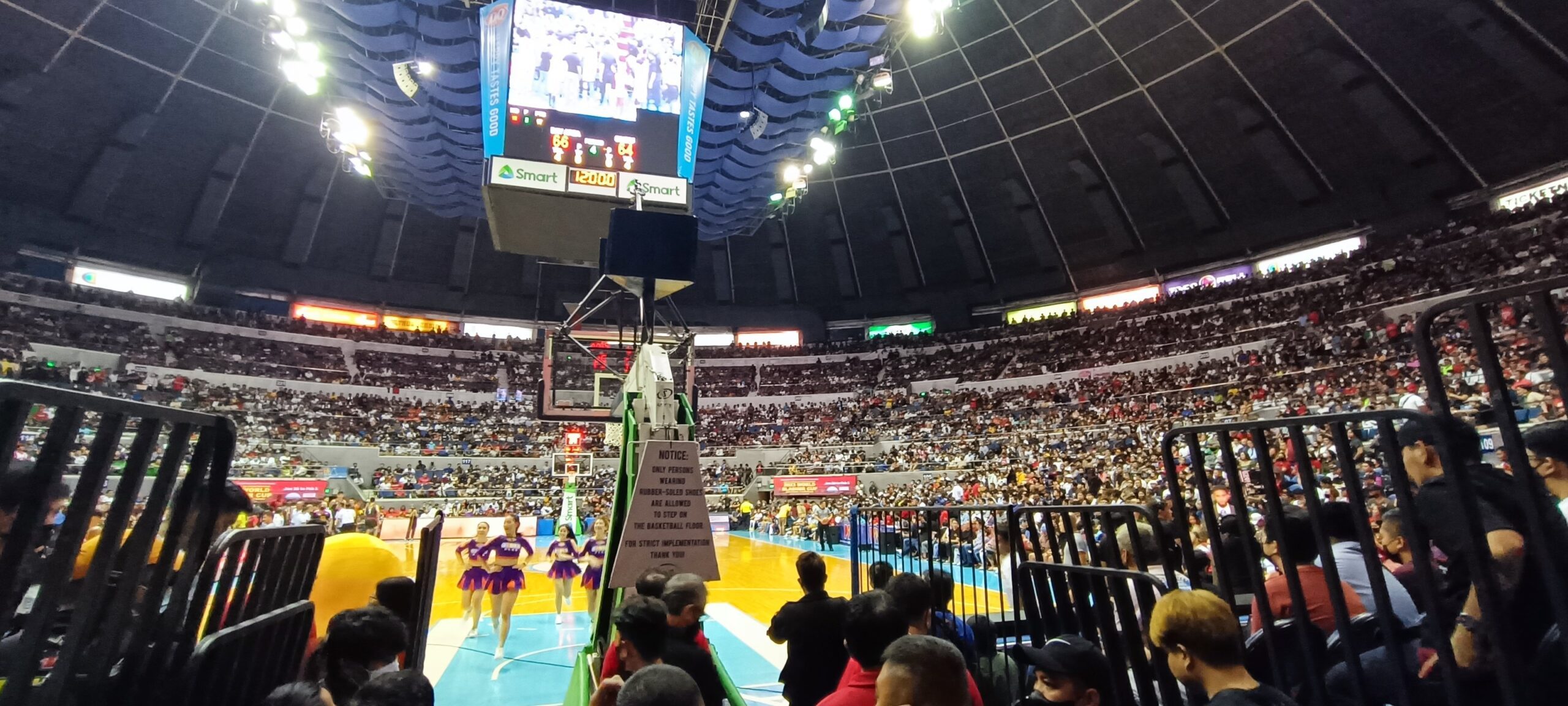
A content agreement between Manny V. Pangilinan’s (MVP) network TV5, Bro. Eddie Villanueva’s Zoe Broadcasting Network Incorporated, and the Philippine Basketball Association (PBA) to air the live games on Zoe channel A2Z was announced on October 17.
For PBA double-headers on Wednesdays and Fridays, the first game will now be shown live on A2Z at 4 pm (from 3 pm) instead of a delayed airing on TV5 – with the second game at 8 pm (from 6:30 pm) on weekdays. Sunday games will start at 3 pm and 6:15 pm. On pay cable television, the games will still be shown live on MVP’s Cignal TV’s PBA Rush channel.
Now why would TV5 give up its free TV broadcast PBA games, which will enter the 48th Season on November 5?
Fresh from Gilas Pilipinas’ gold medal victory in the Asian Games and a successful Philippine hosting of the FIBA World Cup 2023, one would think that these might just get Filipinos more interested in watching PBA games live.
But if this were true, TV5 wouldn’t have packaged this particular content deal. The reason is simple: ratings and the need to turn a profit.
With so many sports shows now under MVP’s media empire, his telecommunications business is also trying to get more eyeballs and subscribers to their sports apps, such as Pilipinas Live and Smart LiveStream, as advertisers pay more attention to online marketing.
Except for the games of fan-favorite Barangay Ginebra, the TV ratings of PBA games – though they may have improved in recent years, as the PBA claims – are simply no match to the ratings of entertainment shows, especially the teleseryes (soap operas and fantasy shows) on prime time.
Ratings are, of course, important to broadcast companies because they’re the primary consideration of advertisers who buy spots on television. Why place ads on a PBA game that’s 1% or below when you can buy spots during a hit teleserye that rates 20%?
Back to news and entertainment
So, when TV5 President Guido Zaballero said that the reason for the transfer of the games to A2Z is because they wanted a dedicated channel for the PBA, implicit in his statement was that TV5 is earning more from teleseryes. A lot, lot more.
In 2006, a spot during prime time was around P150,000 for a 30-second commercial. Nowadays, it costs around P500,000. A network can fill a one-hour program with 18 minutes of commercials.
In the press conference where the PBA-TV5-A2Z deal was announced, Zaballero acknowledged that one of the reasons for the transfer is the new focus of TV5 (actually a refocus after the failed sports-led programming when TV5 was headed by coach Chot Reyes), which is entertainment and news.
This refocus started when ABS-CBN struck a content deal with TV5 after the Duterte administration and the House of Representatives shuttered the then-leading broadcast company’s free-to-air operations in 2020, killing also its sports channel on its digital TVPlus.
In March 2021, TV5 started airing ABS-CBN’s hit teleseryes, such as FPJ’s Ang Probinsyano in the prime time block. This content deal was renewed this year, with FPJ’s Batang Quiapo starring Coco Martin now leading the prime time block.
TV5’s focus on entertainment and news was all the more sharpened when the Kapatid network took in Tito Sotto, Vic Sotto, Joey de Leon (TVJ) and the rest of the Dabarkads (Friends) early this year after they left TAPE Inc.’s Eat Bulaga! shown on leading network GMA.
TV5 is now competitive in the noon-time slot after the launch of TVJ’s E.A.T on July 1. More often than not, E.A.T. trumps Eat Bulaga! and the combined ratings of ABS-CBN’s It’s Showtime on GMA7’s sister channel GTV and A2Z + Kapamilya Channel on cable.
TV5 is also giving more support to its evening news program.
Frontline Pilipinas recently began competing head-to-head for an hour-and-a-half with GMA’s 24 Oras and ABS-CBN’s TV Patrol from 6:30 pm to 8 pm. Now anchored by ex-Kapamilya Julius Babao and Cheryl Cosim, Frontline Pilipinas used to be a shorter news program than 24 Oras and TV Patrol and was shown earlier than its rivals due to the PBA games. Its start also depended on what time the first PBA game would finish, a sign that news wasn’t the priority.
With the popularity of ABS-CBN’s teleserye Batang Quiapo, TV5 now gets more ads in its nightly news program. From insignificant ratings the past years, Frontline Pilipinas has already overtaken TV Patrol although it’s still way behind 24 Oras, based on Nielsen overnight ratings this month of October as disclosed by GMA Network. Last October 19, for instance, 24 Oras scored 15.7% while Frontline Pilipinas hit 4.2% and TV Patrol registered 3.7%.
ABS-CBN, despite its financial problems, is holding on to its flagship news program TV Patrol because it’s still getting a substantial number of ads in the Noli de Castro-led show. One reason for this is that it’s shown prior to the hit teleseryes. A rule in the television industry is that a popular show pulls up the program prior to it – as viewers would look forward to the next show.
The expectation for the PBA-TV5-A2Z deal is that on the days when there’s a live PBA game on A2Z, those who used to watch ABS-CBN’s prime time teleseryes on A2Z will now have to switch to TV5. This should lead to an uptick in TV5’s prime time ratings. A2Z will now be airing the teleseryes on a delayed telecast whenever there’s a PBA game.
Together with the high ratings of Batang Quiapo, E.A.T. leading in the noontime block, plus more ads on Frontline Pilipinas, TV5 could possibly be on track to finally make a profit for MVP after he took over the network 13 years ago or in 2010.
Good old days
The poor television ratings of PBA games – often below the radar except for Barangay Ginebra games – are quite disappointing given that it’s Asia’s first professional league, and I’m sure everyone would have loved to see it grow in the interest of the sport and commerce.
Those now in their senior years know the excitement of watching PBA games when it was still a young league or even during its predecessor, the Manila Industrial and Commercial Athletic Association or MICAA.
The intense rivalry between teams, highlighted by the long competitive history between Crispa and Toyota, plus the fact that there was still no worldwide web at that time, was an important ingredient in PBA’s good attendance and ratings. Thousands trooped to the Araneta Coliseum in Cubao or Rizal Coliseum in Manila where the games were played.
The whole family watched these games (or listened to the radio), not just lolo (grandfather), tatay (father), and kuya (brother) on their TV sets with antennas. Nanay (mother), ate (sister), and lola (grandmother) were often supporters of Toyota due to the handsome men on the team such as Robert Jaworski, Francis Arnaiz, while the males were usually fans of Crispa.
The Big J’s retirement from playing in 1998 was a big factor that hurt the league. Ginebra San Miguel retired his number 7 jersey on July 8, 2012 in ceremonies at the Big Dome.
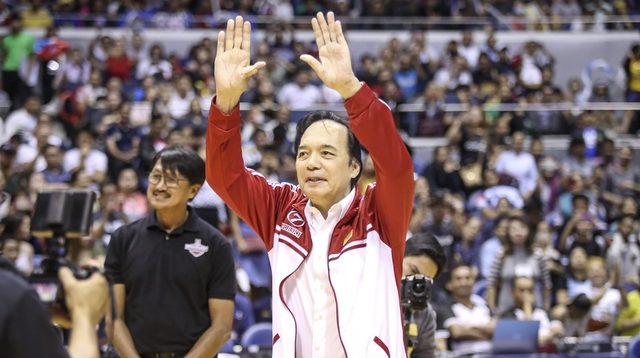
These days, however, the PBA television audience is much smaller, with around 95% of viewers now male, a big change from yesteryears. Women hardly watch PBA games, and even young men now prefer to play games online or watch non-sports shows on their mobile phones. Women now tune in to women’s volleyball, either the UAAP women’s volleyball or the rising Premier Volleyball League (PVL).
If a PBA game competes with a teleserye, the latter wins hands down because nanay, who’s had a rough day taking care of kids, washing clothes, cooking, deserves a rest and escape. She also controls the remote by this time.
In the ’70s and ’80s, it was easier to get the whole family glued to the tube since there were only 4 to 5 channels and there was no remote.
Moreover, teleseryes such as ABS-CBN’s successful FPJ’s Ang Probinsyano and Batang Quiapo series, are popular among males, probably a sign of the times with many women working abroad and more men staying behind to take care of children.
Fantaseryes (fantasy series), such as GMA’s Lolong also shown on prime time, cater to kids and the whole family.
These daily shows rate because the whole family watches, which is what advertisers like. That’s good for traditional marketing of food products like powdered milk and beer, shampoos and detergents, vitamins and cough remedies, toothpastes and mouthwashes.
Goodwill for Villanueva
Now, what’s in it for Villanueva’s channel A2Z?
This is a more tricky question since Bro. Eddie’s bottom line isn’t really just ratings. The founder of the Christian group Jesus Is Lord (JIL) pursues a conservative agenda in Congress where he is a representative of the Citizens’ Battle Against Corruption party.
A2Z will probably take a hit in its prime time ad sales since its viewers will now shift to TV5 or GMA7 to watch teleseryes whenever there’s a PBA game. However, this will likely be offset by the fee that TV5 will be paying Zoe Broadcasting to air PBA games on A2Z.
Intentionally or not, by giving PBA a new home, Bro. Eddie generates goodwill, a positive factor in evangelization. This follows the good ties that have been developed between Bro. Eddie and the influential Kapamilya community after he took in ABS-CBN shows following the shutdown of the Lopezes’ free tv and radio operations in 2020. Zoe Broadcasting was actually the first to give ABS-CBN teleseryes a home three months after the House of Representatives rejected the latter’s franchise application.
In Bro. Eddie’s Jesus Is Lord’’s 45th anniversary held recently, Kapamilya stars led by Coco Martin expressed gratitude to the evangelist, a fan of the late actor Fernando Poe Jr., for his efforts in supporting Kapamilya shows.
Such endearments might come in handy in 2028 when his son, Senator Joel Villanueva, a true PBA fan by the way, ends his two successive terms in the upper house.
The losers in this PBA-TV5-A2Z deal are PBA’s masa (masses) viewers who can’t afford to download apps and watch the games online. Those who live in areas where A2Z’s transmission is weak, especially those outside Greater Manila Area, will not be able to watch their beloved Barangay Ginebra live, unless they’re Smart subscribers and have the Smart Live app.
Zoe Broadcasting, however, has taken steps to improve its digital transmission so that viewers of A2Z will have better reception. Starting this October, viewers in the following areas in Central and Northern Luzon – Baguio City, Benguet, La Union, Pangasinan, Pampanga, Tarlac, Nueva Ecija – were asked to rescan their set-top boxes.
Other losers are PBA fans who like to watch the games in person. With the 4-hour gap between the two PBA weekday games, a ticket holder who wants to watch both games will now have to spend half a day in the arena, and will go home after the second game ends at around 10 pm instead of 8:30 pm.
PBA, however, plans to introduce PBA Women’s 3×3 games as intermission number between the two games to bring in more female interest in the league. Whether this will succeed remains to be seen.
Between passion and commerce
Why has the PBA lost its luster?
First, except for the games of ‘Never Say Die’ Barangay Ginebra, the strong rivalries between teams is sorely lacking. The league is dominated by the teams of conglomerate San Miguel Corporation (SMC) and the teams of sports patron MVP. Most of the championships that have been won in the PBA’s latter era are concentrated in only a few teams.
The Alaska Aces’ departure from the PBA in 2022 after nearly four decades further reduced the rivalry in the league.
The PBA is partly to blame for this because this shows that the imperative of having parity and a level-playing field among the teams – now numbering 12 – has not been achieved.
Second, the commercialization of the PBA is killing the spirit of the sport that was evident in its beginnings and early years.
Former Senator Freddie Webb once told me in an interview that when he was playing for YCO Painters in the MICAA, they only had a regular salary that was the same as the other employees in the company. Their main reason for playing was simply their love for the sport.
Today, PBA stars earn roughly the same or even more than CEOs of big companies. And the league is now faced with its young stars like the Ravena brothers, Kai Sotto, Dwight Ramos playing in Asian leagues like the Japan B. League due to higher pay of reportedly around $10,000 monthly (P560,000).
The intense rivalry in the PBA was also due to the fact that there were no sister teams playing in the same league. Today, 3 of the 12 PBA teams – Barangay Ginebra San Miguel, Magnolia Chicken Timplados Hotshots, San Miguel Beermen – are under Ramon Ang’s business empire, while 3 – TNT Tropang Giga, NLEX Road Warriors, Meralco Bolts – are under MVP’s. Half of the teams in the league are associated with these two tycoons. Some have referred to PBA as the SMC-MVP league.
In its early years, the PBA had garments maker Crispa Redmanizers owned by the Floro family; Mariwasa-Noritake Porcelain Makers owned by the Coseteng family; car distributor Delta Motors’ Toyota Comets (later Tamaraws) led by coach Dante Silverio; Concepcion Carrier Weathermakers of the Concepcion family; the Gokongwei’s Presto Ice Cream; Universal Textile (Utex) Weavers or Utex of Patricio Luis Lim; the Elizaldes’ Tanduay Distillery (Elizalde’s YCO Painters stayed with the MICAA); Pepsi product 7-Up of the Lorenzo family; Royal True Orange of San Miguel Corporation, then led by the Soriano family.
This was during an era when Filipino industrialists still found it viable to have a not-so-costly basketball team in the league. That’s no longer the case today with PBA players, especially its stars, earning six-figure salaries every month.
Inciting fans
How do you then solve a problem like the PBA? Or, put it another way, how do you get the whole family to watch PBA games?
For many years, the PBA has tried several strategies to boost attendance and ratings of PBA games. They’ve tinkered with the conference format, height of imports, adopted FIBA/NBA rule-changes to make the game more exciting. They brought the games outside Metro Manila with earlier schedules.
Although these have contributed in some ways to addressing or arresting the PBA’s problems, the fact is, attendance and ratings are still poor if Barangay Ginebra isn’t playing. They’re still no match to the ratings of the daily teleseryes.

The poor ratings are also reflected in low attendance. Just compare the live audience in UAAP basketball and volleyball games to PBA games (except Ginebra’s) and you’ll see the stark contrast. Just compare the ad load in UAAP basketball or volleyball games to PBA games and you’ll see the huge disparity. Some of the ads on PBA games are actually commercials of the 12 teams in the league.
This deal with A2Z also means that TV5 is giving priority to collegiate games as well as the PVL for its dedicated sports channel, One Sports PH, where these games will continue to be aired live on UHF and on digital television.
Restore rivalry
The key to bringing back the PBA’s glory is to go to the league’s roots: restore the strong rivalry, improve parity in the league, strengthen the fan base of the teams, and rekindle the spirit of loving the sport over monetary considerations.
One idea that comes to mind is for the country’s richest cities or provinces to have partnerships with the commercial teams. This would incite the strong spirit of regionalism among Filipinos.
For instance, teams can be marketed as Makati-Blackwater vs Taguig-Terrafirma. Imagine the supporters of the Binays going up against the supporters of the Cayetanos.
Or why not have a Davao-Phoenix Fuelmasters team that would go up against Ilocos Norte-Northport Batang Pier, which could get Vice President Sara Duterte and President Ferdinand Marcos Jr. watching the game?
The now-defunct Metropolitan Basketball Association (MBA) league, backed by broadcast partner ABS-CBN, had a good start with its regional teams although it didn’t last long as it was too costly. The fan base of Manny Pacquiao’s Maharlika Pilipinas Basketball League (MPBL) is party due to regionalism.
Another idea is to invite more foreign teams to play in the PBA conferences. Note the success of the 2022-2023 PBA Commissioner’s Cup when a foreign team, Bay Area Dragons from Hong Kong, went up against Barangay Ginebra in the finals.
A new PBA record 54,589 people watched game 7 when the Justin Brownlee-led Barangay Ginebra defeated the visiting Bay Area Dragons 114-99 in the Philippine Arena in Bulacan. According to the PBA, the first 6 games of the series saw an average attenance of 18,453.
I’m sure the PBA has heard many other recommendations and insights from experts as well as netizens on how to restore the league’s glory. Whether it’s the spirit of regionalism, nationalism, or simply rekindling the essence of sport, now is an opportune time for change, especially after winning the gold medal in the Asian Games. – Rappler
Add a comment
How does this make you feel?
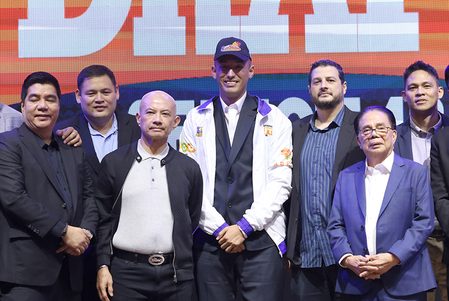
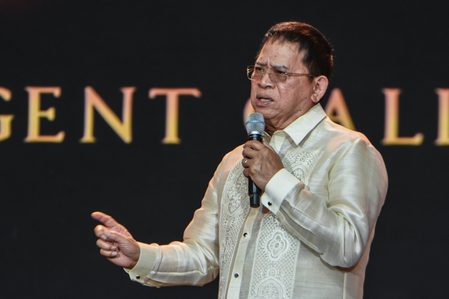





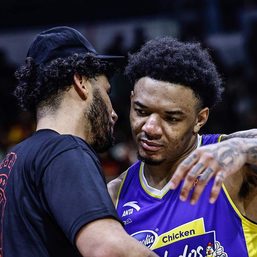
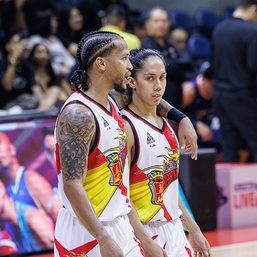
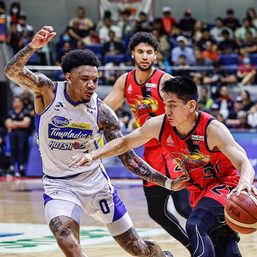







![[ANALYSIS] A new era of noontime TV: GMA-7 takes in ABS-CBN’s ‘It’s Showtime’](https://www.rappler.com/tachyon/2024/04/gma-eat-bulaga-showtime-april-10-2024.jpg?resize=257%2C257&crop=416px%2C0px%2C1080px%2C1080px)


There are no comments yet. Add your comment to start the conversation.